Observer Name
Michael Janulaitis
Observation Date
Tuesday, January 22, 2019
Avalanche Date
Monday, January 21, 2019
Region
Uintas » Hoyt Peak
Location Name or Route
Hoyt Area
Elevation
8,700'
Aspect
Northwest
Slope Angle
37°
Trigger
Natural
Avalanche Type
Soft Slab
Avalanche Problem
New Snow
Weak Layer
New Snow/Old Snow Interface
Depth
2'
Width
250'
Vertical
150'
Comments
I got out early this morning to ski some quick low altitude laps. The new snow is right side up and where not wind effected is riding and skiing great. The problem, however; is that there is wide-spread wind loading even in treed terrain that normally is de-void of wind effect. I was skiing in this area on Friday purposely staying away from this small steep section skiing 30 degree treed terrain nearby. In fact when I approached this small section on Friday I actually walked back downhill and all the way around because I felt the low altitude terrain would be much more dangerous as it has more facets. Fast forward 3 days and had I not respected my intuition and walked down and around my skin track would have gone right through the lower angle lookers left flank. If you look closely the lookers left flank is thin meaning this is a great place to trigger a slide. This is valuable information which is going to be archived in my brain. There is a solid foot of snow on top of the weak layer so I suspect the slide occurred during the beginning of the storm then loaded back up during our post frontal wind event. This is another sign that on Friday I was approaching a slope that was teetering on collapsing. Oh one more comment, take a look at the last flank pic. That's at the base of the slide path and after subtracting out the new snow on top the flank is still 2 feet thick. The first hit of this storm cycle laid down a very cohesive slab connecting terrain features such as downed trees and rollovers allowing for larger avalanches. This soft slab failed on the melt-freeze layer that formed January 8th-10th when the temperature remained above freezing for 2 days and reached mid-forties on the 9th at the beginning of our last high pressure cycle.
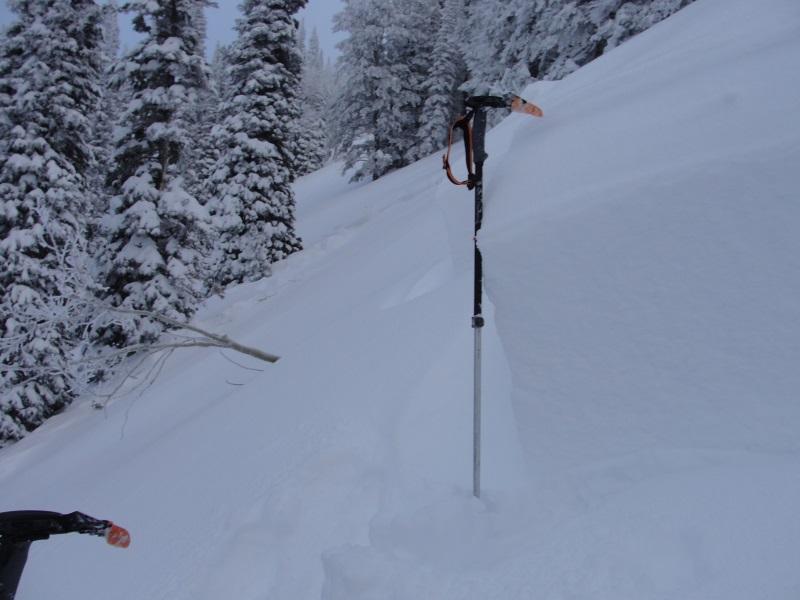

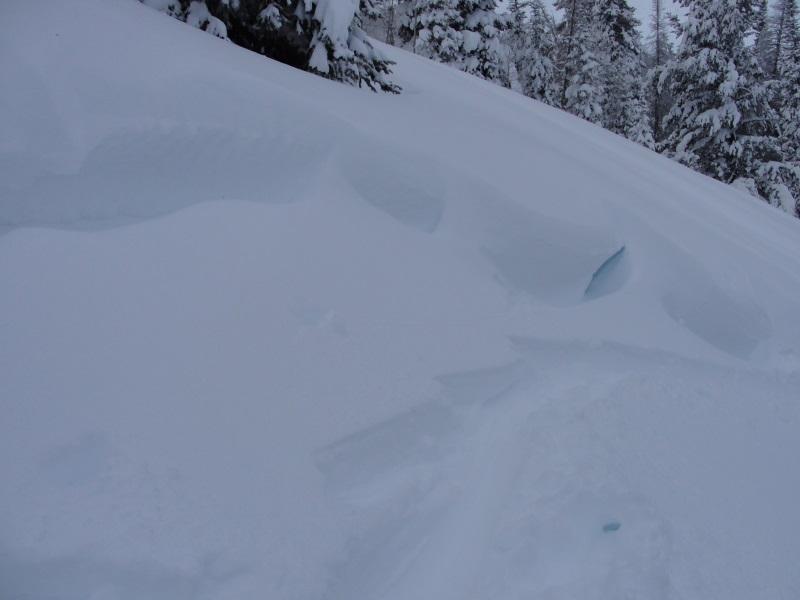
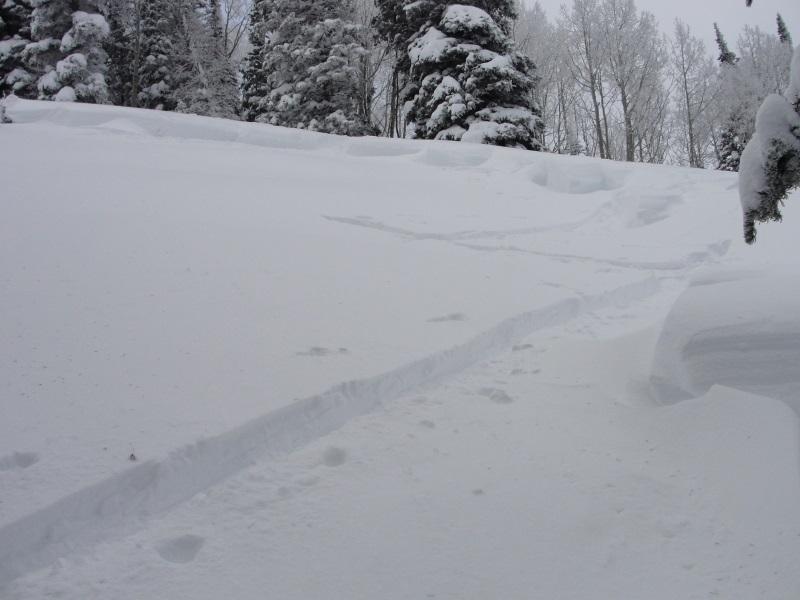
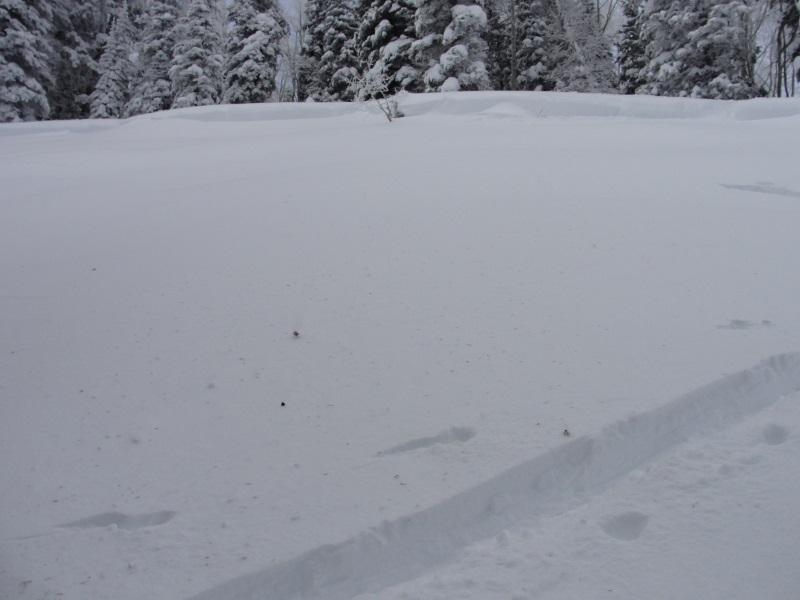
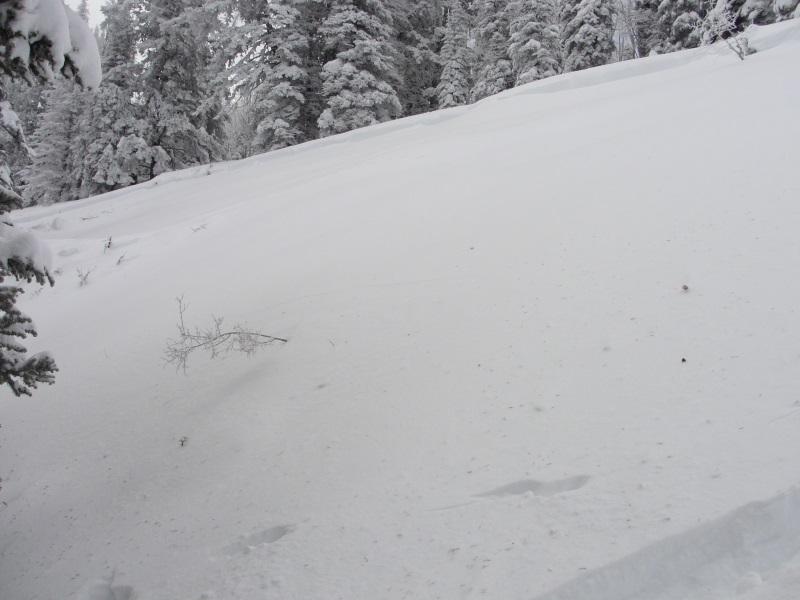
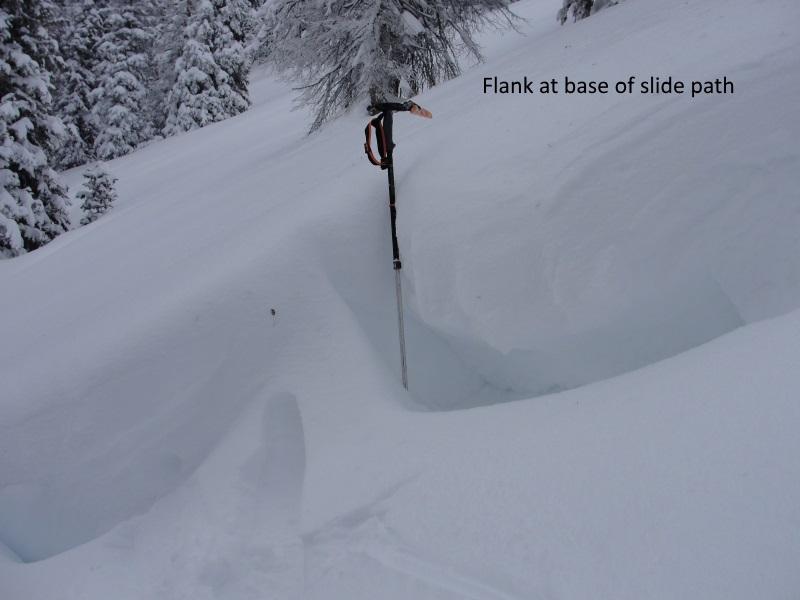
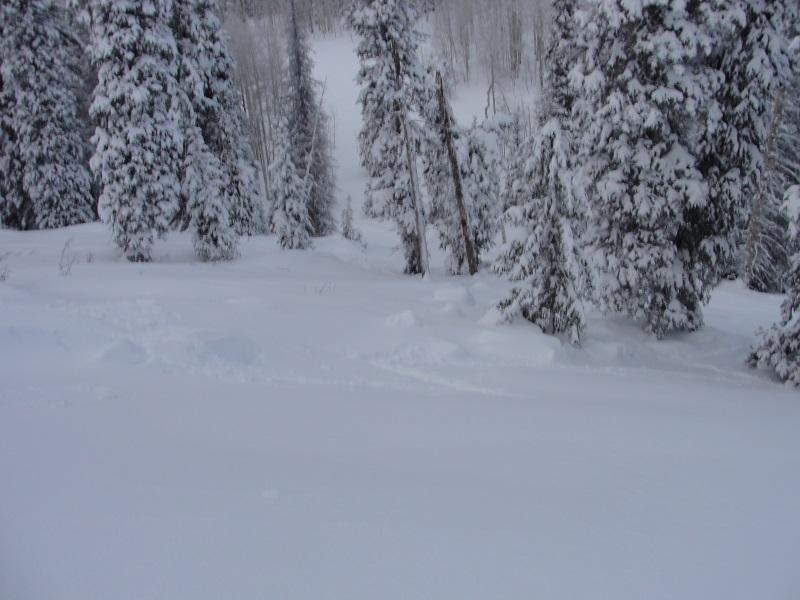
Coordinates



